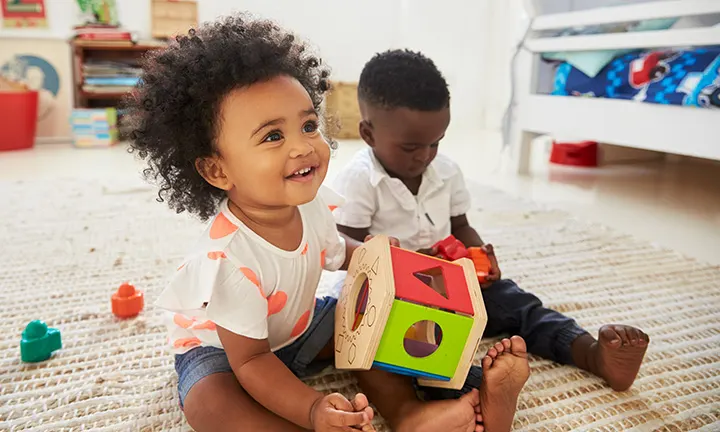What is parallel play in children? Simply put, it’s a form of play that is often observed in children, particularly between the ages of 2 and 3. This type of play sees children engaging in similar activities in close proximity to each other, yet without any direct interaction. As kids start to socialize and explore their surroundings, parallel play forms an integral part of their journey.
Although it might seem like individualistic play, it’s a rich source of developmental benefits. This post will delve into what parallel play in children is, its many advantages, how it sets itself apart from other types of play, and how you can encourage it at home. Our aim is to equip you with the tools to foster your child’s social and cognitive growth through parallel play.
The Definition of Parallel Play
Have you ever asked yourself – what is parallel play in children? Well, it’s a behavior typically seen in kids between the ages of two and three. This type of play involves children partaking in independent activities while in close proximity to each other, but not actively interacting.
In the midst of parallel play, each child is absorbed in their own activity, occasionally observing or imitating the actions of their playmates. Although characterized by individualistic play, it plays a crucial role in a child’s social development. It paves the way for children to explore their interests while learning from their peers, even without direct engagement.
The age range for parallel play can span from 18 months to three years old. Every child is unique and develops at their own pace, so the timing can vary. As children mature and their social skills advance, they transition into more interactive forms of play.
The Benefits of Parallel Play
While parallel play may seem like children are simply engrossed in their own worlds, it actually offers a multitude of developmental benefits. One of the key perks of parallel play is its positive impact on social emotional growth through parallel play, children learn essential social skills such as sharing, taking turns, and respecting personal boundaries. They get the opportunity to observe and imitate their peers’ behavior, fostering a sense of empathy and cooperation.
Parallel play also plays a crucial role in promoting language and communication skills. The spontaneous conversations children have during play, even without direct interaction, enhance their vocabulary and conversational abilities. They also develop listening skills as they pay attention to their peers’ words and actions.
It also aids in cognitive development. The exposure to new toys, objects, or scenarios stimulates their curiosity and encourages problem-solving abilities. Observing how their peers interact with toys or approach different situations can ignite their creativity and imaginative thinking.
Nudging Your Child Toward Parallel Play
As a parent, you can encourage parallel play by setting up a safe, comfortable, and distraction-free play environment. Make sure there’s ample space for multiple children to play side by side without feeling crowded. Arrange toys and materials in an accessible manner for children to explore with ease.
Option for toys and activities that promote independent play and imagination. Open-ended toys like blocks, puzzles, and art supplies allow children to engage in parallel play while exploring their creativity. Steer clear of toys that encourage solitary play or require constant adult involvement.
At Rising Stride, we understand the importance of parallel play in children’s development. That’s why we offer a wide array of age-appropriate toys and activities that promote independent play and social interaction.

